Originally published in the December 1958 issue of The Freeman , this essay is written in the first-person from the perspective of a pencil, explaining its complexity and defending Adam Smith 's concept of an invisible hand acting in free markets.
- 1 Complicated Machinery
- 2 No One Knows
I am a lead pencil—the ordinary wooden pencil familiar to all boys and girls and adults who can read and write. [1]
Writing is both my vocation and my avocation; that's all I do.
You may wonder why I should write a genealogy. Well, to begin with, my story is interesting. And, next, I am a mystery—more so than a tree or a sunset or even a flash of lightning. But, sadly, I am taken for granted by those who use me, as if I were a mere incident and without background. This supercilious attitude relegates me to the level of the commonplace. This is a species of the grievous error in which mankind cannot too long persist without peril. For, as a wise man observed, "We are perishing for want of wonder, not for want of wonders." [2]
I, Pencil, simple though I appear to be, merit your wonder and awe, a claim I shall attempt to prove. In fact, if you can understand me—no, that's too much to ask of anyone—if you can become aware of the miraculousness which I symbolize, you can help save the freedom mankind is so unhappily losing. I have a profound lesson to teach. And I can teach this lesson better than can an automobile or an airplane or a mechanical dishwasher because—well, because I am seemingly so simple.
Simple? Yet, not a single person on the face of this earth knows how to make me . This sounds fantastic, doesn't it? Especially when it is realized that there are about one and one-half billion of my kind produced in the U. S. A. each year.
Pick me up and look me over. What do you see? Not much meets the eye—there’s some wood, lacquer, the printed labeling, graphite lead, a bit of metal, and an eraser.
Just as you cannot trace your family tree back very far, so is it impossible for me to name and explain all my antecedents. But I would like to suggest enough of them to impress upon you the richness and complexity of my background.
My family tree begins with what in fact is a tree, a cedar of straight grain that grows in Northern California and Oregon . Now contemplate all the saws and trucks and rope and the countless other gear used in harvesting and carting the cedar logs to the railroad siding. Think of all the persons and the numberless skills that went into their fabrication: the mining of ore, the making of steel and its refinement into saws, axes, motors; the growing of hemp and bringing it through all the stages to heavy and strong rope; the logging camps with their beds and mess halls, the cookery and the raising of all the foods. Why, untold thousands of persons had a hand in every cup of coffee the loggers drink!
The logs are shipped to a mill in San Leandro , California. Can you imagine the individuals who make flat cars and rails and railroad engines and who construct and install the communication systems incidental thereto? These legions are among my antecedents.
Consider the millwork in San Leandro. The cedar logs are cut into small, pencil-length slats less than one-fourth of an inch in thickness. These are kiln dried and then tinted for the same reason women put rouge on their faces. People prefer that I look pretty, not a pallid white. The slats are waxed and kiln dried again. How many skills went into the making of the tint and the kilns, into supplying the heat, the light and power, the belts, motors, and all the other things a mill requires? Sweepers in the mill among my ancestors? Yes, and included are the men who poured the concrete for the dam of a Pacific Gas & Electric Company hydroplant which supplies the mill's power!
Don’t overlook the ancestors present and distant who have a hand in transporting sixty carloads of slats across the nation from California to Wilkes-Barre!

Complicated Machinery
Once in the pencil factory—$4,000,000 in machinery and building, all capital accumulated by thrifty and saving parents of mine—each slat is given eight grooves by a complex machine, after which another machine lays leads in every other slat, applies glue, and places another slat atop—a lead sandwich, so to speak. Seven brothers and I are mechanically carved from this "wood-clinched" sandwich.
My "lead" itself—it contains no lead at all—is complex. The graphite is mined in Ceylon . Consider these miners and those who make their many tools and the makers of the paper sacks in which the graphite is shipped and those who make the string that ties the sacks and those who put them aboard ships and those who make the ships. Even the lighthouse keepers along the way assisted in my birth—and the harbor pilots.
The graphite is mixed with clay from Mississippi in which ammonium hydroxide is used in the refining process. Then wetting agents are added such as sulfonated tallow —animal fats chemically reacted with sulfuric acid . After passing through numerous machines, the mixture finally appears as endless extrusions—as from a sausage grinder—cut to size, dried, and baked for several hours at 1,850 degrees Fahrenheit. To increase their strength and smoothness the leads are then treated with a hot mixture which includes candelilla wax from Mexico , paraffin wax , and hydrogenated natural fats.
My cedar receives six coats of lacquer. Do you know all of the ingredients of lacquer? Who would think that the growers of castor beans and the refiners of castor oil are a part of it? They are. Why, even the processes by which the lacquer is made a beautiful yellow involves the skills of more persons than one can enumerate!
Observe the labeling. That's a film formed by applying heat to carbon black mixed with resins. How do you make resins and what, pray, is carbon black?
My bit of metal—the ferrule —is brass . Think of all the persons who mine zinc and copper and those who have the skills to make shiny sheet brass from these products of nature. Those black rings on my ferrule are black nickel . What is black nickel and how is it applied? The complete story of why the center of my ferrule has no black nickel on it would take pages to explain.
Then there's my crowning glory, inelegantly referred to in the trade as "the plug," the part man uses to erase the errors he makes with me. An ingredient called "factice" is what does the erasing. It is a rubber-like product made by reacting rape seed oil from the Dutch East Indies with sulfur chloride . Rubber, contrary to the common notion, is only for binding purposes. Then, too, there are numerous vulcanizing and accelerating agents. The pumice comes from Italy ; and the pigment which gives "the plug" its color is cadium sulfide .
Does anyone wish to challenge my earlier assertion that no single person on the face of this earth knows how to make me?
No One Knows
Actually, millions of human beings have had a hand in my creation, no one of whom even knows more than a very few of the others. Now, you may say that I go too far in relating the picker of a coffee berry in far off Brazil and food growers elsewhere to my creation; that this is an extreme position. I shall stand by my claim. There isn't a single person in all these millions, including the president of the pencil company, who contributes more than a tiny, infinitesimal bit of know-how. From the standpoint of know-how the only difference between the miner of graphite in Ceylon and the logger in Oregon is in the type of know-how. Neither the miner nor the logger can be dispensed with, any more than can the chemist at the factory or the worker in the oil field—paraffin being a by-product of petroleum.
Here is an astounding fact: Neither the worker in the oil field nor the chemist nor the digger of graphite or clay nor any who mans or makes the ships or trains or trucks nor the one who runs the machine that does the knurling on my bit of metal nor the president of the company performs his singular task because he wants me. Each one wants me less, perhaps, than does a child in the first grade. Indeed, there are some among this vast multitude who never saw a pencil nor would they know how to use one. Their motivation is other than me. Perhaps it is something like this: Each of these millions sees that he can thus exchange his tiny know-how for the goods and services he needs or wants. I may or may not be among these items.
There is a fact still more astounding: The absence of a master mind, of anyone dictating or forcibly directing these countless actions which bring me into being. No trace of such a person can be found. Instead, we find the Invisible Hand at work. This is the mystery to which I earlier referred.
It has been said that "only God can make a tree." Why do we agree with this? Isn't it because we realize that we ourselves could not make one? Indeed, can we even describe a tree? We cannot, except in superficial terms. We can say, for instance, that a certain molecular configuration manifests itself as a tree. But what mind is there among men that could even record, let alone direct, the constant changes in molecules that transpire in the life span of a tree? Such a feat is utterly unthinkable!
I, Pencil, am a complex combination of miracles: a tree, zinc, copper, graphite, and so on. But to these miracles which manifest themselves in Nature an even more extraordinary miracle has been added: the configuration of creative human energies—millions of tiny know-hows configurating naturally and spontaneously in response to human necessity and desire and in the absence of any human master-minding! Since only God can make a tree, I insist that only God could make me. Man can no more direct these millions of know-hows to bring me into being than he can put molecules together to create a tree.
The above is what I meant when writing, "If you can become aware of the miraculousness which I symbolize, you can help save the freedom mankind is so unhappily losing." For, if one is aware that these know-hows will naturally, yes, automatically, arrange themselves into creative and productive patterns in response to human necessity and demand—that is, in the absence of governmental or any other coercive master-minding—then one will possess an absolutely essential ingredient for freedom: a faith in free men . Freedom is impossible without this faith.
Once government has had a monopoly of a creative activity such, for instance, as the delivery of the mails, most individuals will believe that the mails could not be efficiently delivered by men acting freely. And here is the reason: Each one acknowledges that he himself doesn't know how to do all the things incident to mail delivery. He also recognizes that no other individual could do it. These assumptions are correct. No individual possesses enough know-how to perform a nation's mail delivery any more than any individual possesses enough know-how to make a pencil. Now, in the absence of a faith in free men—in the unawareness that millions of tiny know-hows would naturally and miraculously form and cooperate to satisfy this necessity—the individual cannot help but reach the erroneous conclusion that mail can be delivered only by governmental "master-minding."
If I, Pencil, were the only item that could offer testimony on what men can accomplish when free to try, then those with little faith would have a fair case. However, there is testimony galore; it's all about us and on every hand. Mail delivery is exceedingly simple when compared, for instance, to the making of an automobile or a calculating machine or a grain combine or a milling machine or to tens of thousands of other things. Delivery? Why, in this area where men have been left free to try, they deliver the human voice around the world in less than one second; they deliver an event visually and in motion to any person's home when it is happening; they deliver 150 passengers from Seattle to Baltimore in less than four hours; they deliver gas from Texas to one's range or furnace in New York at unbelievably low rates and without subsidy; they deliver each four pounds of oil from the Persian Gulf to our Eastern Seaboard —half-way around the world—for less money than the government charges for delivering a one-ounce letter across the street!
The lesson I have to teach is this: Leave all creative energies uninhibited . Merely organize society to act in harmony with this lesson. Let society's legal apparatus remove all obstacles the best it can. Permit these creative know-hows freely to flow. Have faith that free men will respond to the Invisible Hand. This faith will be confirmed. I, Pencil, seemingly simple though I am, offer the miracle of my creation as testimony that this is a practical faith, as practical as the sun, the rain, a cedar tree, the good earth.
- ↑ My official name is "Mongol 482." My many ingredients are assembled, fabricated, and finished by Eberhard Faber Pencil Company, Wilkes-Barre , Pennsylvania .
- ↑ G. K. Chesterton .
This work is in the public domain in the United States because it was legally published within the United States (or the United Nations Headquarters in New York subject to Section 7 of the United States Headquarters Agreement ) before 1964, and copyright was not renewed.
- For Class A renewals records ( books only) published between 1923 and 1963, check the Stanford University Copyright Renewal Database .
- For other renewal records of publications between 1922–1950 see the University of Pennsylvania copyright records scans .
- For all records since 1978, search the U.S. Copyright Office records.
- See also the Rutgers copyright renewal records for further information.
Works published in 1958 would have had to renew their copyright in either 1985 or 1986, i.e. at least 27 years after they were first published/registered but not later than 31 December in the 28th year. As this work's copyright was not renewed, it entered the public domain on 1 January 1987.
The longest-living author of this work died in 1983, so this work is in the public domain in countries and areas where the copyright term is the author's life plus 40 years or less . This work may be in the public domain in countries and areas with longer native copyright terms that apply the rule of the shorter term to foreign works .
It is imperative that contributors search the renewal databases and ascertain that there is no evidence of a copyright renewal before using this license. Failure to do so will result in the deletion of the work as a copyright violation .
Public domain Public domain false false
- PD-US-no-renewal-old-30
- Libertarianism
- Undated works
- Pages with explicit formatting in header fields
Navigation menu
- Journal Club
Join the discussion! Ask questions and share your comments.
- [email protected] 1160 Mission Street San Francisco California

I, Pencil | Summary & Analysis
Summary of i, pencil by leonard e. read.
I, Pencil is an essay written by Leonard E. Read , which tells the story of a simple wooden pencil and explores the complex network of individuals, skills, and resources involved in its creation . The pencil serves as a metaphor for the spontaneous order and creative power of free markets. The essay emphasizes the importance of individual freedom, voluntary cooperation, and the division of labor in driving economic prosperity and innovation.
“I, Pencil” ultimately promotes a belief in the power of free markets and individual freedom , suggesting that central planning and government intervention hinder the natural creative forces that drive innovation and economic growth. The essay concludes by urging readers to recognize and appreciate the miracles of spontaneous order and to have faith in the capabilities of free individuals.
I, Pencil | Summary
“I, Pencil” is an essay that personifies a wooden pencil , narrating its journey from its humble beginnings as a tree to its complex production process involving a vast network of individuals and resources. The pencil expresses a sense of being taken for granted and overlooked despite its remarkable origins. It argues that it symbolizes a multitude of miracles and carries a profound lesson about the wonders of spontaneous order and the importance of individual freedom.
The essay begins by introducing the pencil as a writing instrument and stating that its sole purpose is to write. It highlights its intriguing story and laments being undervalued and seen as a common object. It emphasizes the need for people to wonder and appreciate the extraordinary aspects of everyday items. It invites the reader to examine it closely, revealing its components: wood, lacquer, printed labeling, graphite lead, metal, and an eraser . The pencil then delves into its rich family tree, starting with the cedar tree from which it originates in Northern California and Oregon. It describes the intricate process of logging and the myriad skills involved in bringing the cedar logs to the mill, including mining, steelmaking, rope production, and food cultivation . The essay emphasizes the interconnectedness of various individuals and industries in creating the pencil.
After the logs are transported to a mill in San Leandro, California , the pencil explains the intricate millwork required to transform the cedar logs into thin slats. It highlights the use of wax, kiln drying, and the addition of tint to enhance its appearance . The essay acknowledges the multitude of skills and processes involved, such as concrete pouring for power generation, transportation logistics, and the collaboration of countless individuals to transport the slats across the nation. Once in the pencil factory, the slats undergo a series of processes using complex machinery, including the application of grooves, the insertion of leads, and the use of glue . These processes culminate in the creation of the pencil’s “wood-clinched” sandwich structure. The essay describes the extensive refining process for graphite, which involves miners, toolmakers, paper sack manufacturers, shipping personnel, and lighthouse keepers.
The pencil’s “lead” is explained to contain no actual lead but a complex mixture of graphite and clay , with additional additives and treatments to enhance its properties. It mentions the mining of graphite in Ceylon, the refining process using clay from Mississippi, and the incorporation of various agents and waxes to improve the leads’ strength and smoothness. The pencil reveals that it receives six coats of lacquer , prompting a discussion about the diverse ingredients involved in making lacquer. It mentions castor bean growers, castor oil refiners, and numerous other individuals contributing to the production of the resin used in the lacquer. The labeling on the pencil is described as a film made of carbon black and resins, with details about their manufacturing process.
The pencil’s ferrule, made of brass, leads to a discussion about the mining of zinc and copper and the skills required to convert them into sheet brass . The essay highlights the presence of black nickel on the ferrule and explains its application. It also explores the creation of the eraser, which involves a rubber-like substance made from rape-seed oil and various chemicals. The essay touches on vulcanization and the sourcing of pigments. The pencil concludes by emphasizing that the creation of a pencil involves the collaboration of countless individuals, each contributing a tiny fraction of the knowledge and expertise required . It argues that no single person possesses the complete know-how to make a pencil, just as no individual could create a tree. The essay asserts that the absence of a central planner or mastermind is a testament to the power of voluntary cooperation and the “Invisible Hand” at work .
The essay contends that acknowledging the spontaneous order and creative power of free individuals is crucial for preserving freedom. It argues that faith in free people is essential, as it allows creative energies to flourish and leads to prosperity. It warns against relying on governmental “master-minding” and central planning, using mail delivery as an example . It concludes by celebrating the accomplishments of free individuals and the incredible advancements made possible by voluntary cooperation .
I, Pencil | Analysis
The essay effectively employs personification by giving voice to the pencil , which serves as a persuasive technique to engage the reader emotionally and anthropomorphize the object. By presenting the pencil as a narrator with feelings and a desire to be appreciated, the essay attempts to evoke empathy and curiosity in the reader. While the essay portrays the pencil as a marvel of interconnectedness, it simplifies the complexity of modern production processes .
The essay primarily attributes the pencil’s creation to individual human efforts and the spontaneous order of free markets. It does not delve into the influence of external factors such as regulations, environmental impact, labor conditions, or the role of innovation and technological advancements . The essay’s narrow focus on the creative power of individuals and the absence of centralized direction might overlook potential challenges and issues within the economic system.
The essay presents a strong case for free markets and minimal government intervention by contrasting the pencil’s production with the idea of government “master-minding.” While it highlights the achievements of voluntary cooperation, it simplifies the role of government to a monolithic entity that stifles creativity and efficiency . It does not acknowledge the potential benefits that government regulations and interventions can bring, such as consumer protection, environmental safeguards, or infrastructure development. The essay does not engage with alternative viewpoints or address potential drawbacks, such as income inequality, externalities, or market failures that might require government intervention.
The essay’s focus is on the economic aspects of production and the efficiency of free markets . It largely overlooks other important considerations, such as social welfare, sustainability, and the impact on marginalized communities. By prioritizing economic prosperity, it neglects broader discussions about the distribution of resources and the social consequences of market-driven systems.
I, Pencil | Themes
The essay celebrates the concept of spontaneous order , wherein the countless individual actions of self-interested actors contribute to the overall coordination and functioning of society. It argues that the marvel of the pencil’s creation arises naturally from the voluntary cooperation and exchange of individuals pursuing their interests. This theme emphasizes the idea that complex systems can emerge without central planning or a “master mind.”
“I, Pencil” champions individual liberty and the strength of free markets. It implies that letting creative energy flow freely and organizing a society in accordance with the ideals of voluntary collaboration and individual liberty leads to increased wealth and progress. The article argues against overly interventionist government and emphasizes the role of free individuals in promoting innovation and economic success.
“I, Pencil” asserts the importance of having faith in free individuals and their capacity to organize and create without the need for central direction. It suggests that a belief in the abilities of individuals to voluntarily cooperate and respond to market demands is crucial for maintaining freedom and fostering economic prosperity.
The essay presents a critique of centralized planning and governmental “master-minding.” It argues that relying on central authorities to direct economic activities inhibits the natural creative forces and limits the potential for innovation and progress. It advocates for a decentralized, market-driven approach to economic organization.
I, Pencil | Character Sketch
The protagonist of “I, Pencil” is the pencil itself, which serves as a narrator sharing its story and reflecting on its creation. The pencil is portrayed as a modest and unpretentious character . It acknowledges its simplicity and readily admits that its appearance may not be striking or remarkable at first glance. The pencil displays a curious nature , pondering its existence and the intricate process that brings it into being. It questions why it is often taken for granted and seeks to share its story to provoke wonder and appreciation.
The pencil acknowledges that writing is its vocation and avocation, emphasizing its dedication and purpose . The pencil sees itself as a symbol of miracles, representing the interconnectedness of countless individuals, skills, and resources involved in its creation. It aims to highlight the extraordinary nature of everyday objects and the complex web of human endeavors required to bring them into existence.
I, Pencil | Literary Devices
The essay personifies the pencil, giving it human qualities and a voice. By doing so, it allows the pencil to narrate its own story and engage the reader on a more emotional level, fostering empathy and curiosity.
The pencil serves as a metaphor throughout the essay. It symbolizes the complexity of interconnectedness and the wonders of spontaneous order within economic systems. By using the pencil as a metaphor, the text explores broader themes of cooperation, division of labor, and the marvels of everyday objects.
The essay employs vivid imagery to paint a picture in the reader’s mind and enhance their understanding. It describes the various components and production processes of the pencil in rich detail, allowing readers to visualize the intricate steps involved in its creation.
The text utilizes anecdotes and examples to support its arguments and engage the reader. It recounts specific instances, such as the roles of different individuals in the production of the pencil, to provide concrete evidence and make the narrative more relatable.
The essay employs rhetorical questions to prompt reflection and encourage readers to contemplate the significance of the pencil’s story. By posing questions such as:
“Does anyone wish to challenge my earlier assertion?”
“Isn’t it because we realize that we could not make one?”
The essay alludes to the ideas of thinkers like G. K. Chesterton, who observed that humanity perishes not for the lack of wonders, but for the lack of wonder. By referencing Chesterton’s observation, the text adds credibility and depth to its argument while inviting readers to explore additional philosophical and intellectual avenues.
The essay repeats certain phrases and ideas to emphasize their importance and create a rhetorical impact. For instance, the repetition of the phrase “I, Pencil” throughout the text reinforces the pencil’s role as the central narrator and protagonist.
At times, the essay employs hyperbole to emphasize its points and create a sense of astonishment. It exaggerates the impression that no one on Earth understands how to produce a pencil and that making one is an almost miraculous effort, enhancing the reader’s appreciation for the complexity required.
Las Medias Rojas | Summary & Analysis
The day the crayons quit summary, related articles.
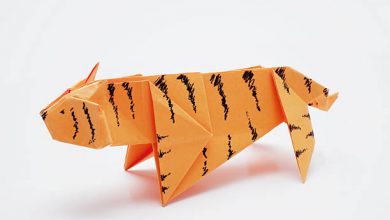
The Tiger in the Menagerie | Summary and Analysis
The embassy of cambodia | summary & analysis, powder by tobias wolff summary, war photographer | summary and analysis, leave a reply cancel reply.
Your email address will not be published. Required fields are marked *
- Night Alice Munro February 28, 2024
Adblock Detected

I, Pencil: A Brilliant Vintage Allegory of How Everything Is Connected
By maria popova.

In 1958, libertarian writer and Foundation for Economic Education founder Leonard Read (September 26, 1898–May 14, 1983) set out to remedy this civilizational injustice in a marvelous essay titled “I, Pencil,” published in Essays on Liberty ( public library ). In a clever allegory, Read delivers his enduring point about the power of free market economy. Casting the pencil as a first-person narrator, he illustrates its astounding complexity to reveal the web of dependencies and vital interconnectedness upon which humanity’s needs and knowledge are based, concluding with a clarion call for protecting the creative freedom making this possible.

Read begins:
I am a lead pencil — the ordinary wooden pencil familiar to all boys and girls and adults who can read and write. Writing is both my vocation and my avocation; that’s all I do. You may wonder why I should write a genealogy. Well, to begin with, my story is interesting. And, next, I am a mystery—more so than a tree or a sunset or even a flash of lightning. But, sadly, I am taken for granted by those who use me, as if I were a mere incident and without background. This supercilious attitude relegates me to the level of the commonplace. This is a species of the grievous error in which mankind cannot too long persist without peril. For, as a wise man observed, “We are perishing for want of wonder, not for want of wonders.”
Half a century before Thomas Thwaites set out to illustrate the complex interdependencies of what we call civilization by making a toaster from scratch , Read writes:
I, Pencil, simple though I appear to be, merit your wonder and awe, a claim I shall attempt to prove. In fact, if you can understand me — no, that’s too much to ask of anyone — if you can become aware of the miraculousness which I symbolize, you can help save the freedom mankind is so unhappily losing. I have a profound lesson to teach. And I can teach this lesson better than can an automobile or an airplane or a mechanical dishwasher because — well, because I am seemingly so simple. Simple? Yet, not a single person on the face of this earth knows how to make me .

Tracing the pencil’s journey from raw material — “a cedar of straight grain that grows in Northern California and Oregon” — to the hands of “all the persons and the numberless skills” involved in its fabrication, Read considers the rich cultural and practical substrata of all these skills and production mechanisms:
Consider the millwork in San Leandro. The cedar logs are cut into small, pencil-length slats less than one-fourth of an inch in thickness. These are kiln dried and then tinted for the same reason women put rouge on their faces. People prefer that I look pretty, not a pallid white. The slats are waxed and kiln dried again. How many skills went into the making of the tint and the kilns, into supplying the heat, the light and power, the belts, motors, and all the other things a mill requires? Sweepers in the mill among my ancestors? Yes, and included are the men who poured the concrete for the dam of a Pacific Gas & Electric Company hydroplant which supplies the mill’s power! Don’t overlook the ancestors present and distant who have a hand in transporting sixty carloads of slats across the nation from California to Wilkes-Barre!
He goes on to delineate the global reaches of the production process — from the pencil’s lead derived from graphite mined in Ceylon to Mexican candelilla wax used used to increase its strength and smoothness to the rapeseed oil Dutch East Indies involved in the creation of its “crowning glory,” the eraser — ultimately pointing to the pencil as a supreme example of Adam Smith’s “Invisible Hand” at work:
Actually, millions of human beings have had a hand in my creation, no one of whom even knows more than a very few of the others… There isn’t a single person in all these millions, including the president of the pencil company, who contributes more than a tiny, infinitesimal bit of know-how. From the standpoint of know-how the only difference between the miner of graphite in Ceylon and the logger in Oregon is in the type of know-how. Neither the miner nor the logger can be dispensed with, any more than can the chemist at the factory or the worker in the oil field — paraffin being a by-product of petroleum. Here is an astounding fact: Neither the worker in the oil field nor the chemist nor the digger of graphite or clay nor any who mans or makes the ships or trains or trucks nor the one who runs the machine that does the knurling on my bit of metal nor the president of the company performs his singular task because he wants me. Each one wants me less, perhaps, than does a child in the first grade. Indeed, there are some among this vast multitude who never saw a pencil nor would they know how to use one. Their motivation is other than me. Perhaps it is something like this: Each of these millions sees that he can thus exchange his tiny know-how for the goods and services he needs or wants. I may or may not be among these items.

Above all, Read suggests, the pencil attests to the godliness of the human capacity for connected imagination. In a sardonic dual jab at religious creationism and excessive government control, Read summons the last line from Joyce Kilmer’s 1918 poem “Trees” and writes:
It has been said that “only God can make a tree.” Why do we agree with this? Isn’t it because we realize that we ourselves could not make one? Indeed, can we even describe a tree? We cannot, except in superficial terms. We can say, for instance, that a certain molecular configuration manifests itself as a tree. But what mind is there among men that could even record, let alone direct, the constant changes in molecules that transpire in the life span of a tree? Such a feat is utterly unthinkable! I, Pencil, am a complex combination of miracles: a tree, zinc, copper, graphite, and so on. But to these miracles which manifest themselves in Nature an even more extraordinary miracle has been added: the configuration of creative human energies — millions of tiny know-hows configurating naturally and spontaneously in response to human necessity and desire and in the absence of any human master-minding! Since only God can make a tree, I insist that only God could make me. Man can no more direct these millions of know-hows to bring me into being than he can put molecules together to create a tree. The above is what I meant when writing, “If you can become aware of the miraculousness which I symbolize, you can help save the freedom mankind is so unhappily losing.” For, if one is aware that these know-hows will naturally, yes, automatically, arrange themselves into creative and productive patterns in response to human necessity and demand — that is, in the absence of governmental or any other coercive master-minding — then one will possess an absolutely essential ingredient for freedom: a faith in free men . Freedom is impossible without this faith.

Just a few years earlier, pencil-lover Steinbeck had written in East of Eden : “The free, exploring mind of the individual human is the most valuable thing in the world.” Whether Read read Steinbeck and succumbed to cryptomnesia or arrived at this strikingly similar sentiment independently is only cause for speculation, but his larger point — one as pertinent to public policy as it is to the private creative endeavor — is what endures with its own timeless miraculousness:
If I, Pencil, were the only item that could offer testimony on what men can accomplish when free to try, then those with little faith would have a fair case. However, there is testimony galore; it’s all about us and on every hand. Mail delivery is exceedingly simple when compared, for instance, to the making of an automobile or a calculating machine or a grain combine or a milling machine or to tens of thousands of other things. Delivery? Why, in this area where men have been left free to try, they deliver the human voice around the world in less than one second; they deliver an event visually and in motion to any person’s home when it is happening; they deliver 150 passengers from Seattle to Baltimore in less than four hours; they deliver gas from Texas to one’s range or furnace in New York at unbelievably low rates and without subsidy; they deliver each four pounds of oil from the Persian Gulf to our Eastern Seaboard — half-way around the world — for less money than the government charges for delivering a one-ounce letter across the street! The lesson I have to teach is this: Leave all creative energies uninhibited . Merely organize society to act in harmony with this lesson. Let society’s legal apparatus remove all obstacles the best it can. Permit these creative know-hows freely to flow. Have faith that free men will respond to the Invisible Hand. This faith will be confirmed. I, Pencil, seemingly simple though I am, offer the miracle of my creation as testimony that this is a practical faith, as practical as the sun, the rain, a cedar tree, the good earth.
Half a century after Read penned his brilliant essay, it was adapted into an animated film illustrating how the same “complex combination of miracles” plays out on various scales in our modern lives:
For an equally pause-giving contemporary counterpart, see The Toaster Project .
Perhaps Ada Lovelace, the world’s first computer programmer — and what, if not computing, is the height of Read’s miraculous web of know-hows? — put it best when she wrote that “everything is naturally related and interconnected.”
— Published June 3, 2015 — https://www.themarginalian.org/2015/06/03/i-pencil-leonard-read/ —

www.themarginalian.org

PRINT ARTICLE
Email article, filed under, books culture history out of print philosophy politics science, view full site.
The Marginalian participates in the Bookshop.org and Amazon.com affiliate programs, designed to provide a means for sites to earn commissions by linking to books. In more human terms, this means that whenever you buy a book from a link here, I receive a small percentage of its price, which goes straight back into my own colossal biblioexpenses. Privacy policy . (TLDR: You're safe — there are no nefarious "third parties" lurking on my watch or shedding crumbs of the "cookies" the rest of the internet uses.)
- Liberty Fund
- Adam Smith Works
- Law & Liberty
- Browse by Author
- Browse by Topic
- Browse by Date
- Search EconLog
- Latest Episodes
- Browse by Guest
- Browse by Category
- Browse Extras
- Search EconTalk
- Latest Articles
- Liberty Classics
- Search Articles
- Books by Date
- Books by Author
- Search Books
- Browse by Title
- Biographies
- Search Encyclopedia
- #ECONLIBREADS
- College Topics
- High School Topics
- Subscribe to QuickPicks
- Search Guides
- Search Videos
- Library of Law & Liberty
- Home /
ECONLIB Books
"I, Pencil: My Family Tree as told to Leonard E. Read"
By leonard e. read.
I am a lead pencil–the ordinary wooden pencil familiar to all boys and girls and adults who can read and write…. [From “I, Pencil”]
First Pub. Date
Irvington-on-Hudson, NY: The Foundation for Economic Education, Inc.
The text of this edition is copyright ©: 1999. Foundation for Economic Education (FEE). (Second printing, August 1999.) The Library of Economics and Liberty is grateful to FEE for permission to produce this essay in electronic form.
Table of Contents
- Introduction, by Milton Friedman
- rdPncl0.html#Introduction, by Milton Friedman
- Afterword, by Donald J. Boudreaux
by Milton Friedman
Introduction,.
Leonard Read’s delightful story, “I, Pencil,” has become a classic, and deservedly so. I know of no other piece of literature that so succinctly, persuasively, and effectively illustrates the meaning of both Adam Smith’s invisible hand—the possibility of cooperation without coercion—and Friedrich Hayek’s emphasis on the importance of dispersed knowledge and the role of the price system in communicating information that “will make the individuals do the desirable things without anyone having to tell them what to do.”
We used Leonard’s story in our television show, “Free to Choose,” and in the accompanying book of the same title to illustrate “the power of the market” (the title of both the first segment of the TV show and of chapter one of the book). We summarized the story and then went on to say:
“None of the thousands of persons involved in producing the pencil performed his task because he wanted a pencil. Some among them never saw a pencil and would not know what it is for. Each saw his work as a way to get the goods and services he wanted—goods and services we produced in order to get the pencil we wanted. Every time we go to the store and buy a pencil, we are exchanging a little bit of our services for the infinitesimal amount of services that each of the thousands contributed toward producing the pencil.
“It is even more astounding that the pencil was ever produced. No one sitting in a central office gave orders to these thousands of people. No military police enforced the orders that were not given. These people live in many lands, speak different languages, practice different religions, may even hate one another—yet none of these differences prevented them from cooperating to produce a pencil. How did it happen? Adam Smith gave us the answer two hundred years ago.”
“I, Pencil” is a typical Leonard Read product: imaginative, simple yet subtle, breathing the love of freedom that imbued everything Leonard wrote or did. As in the rest of his work, he was not trying to tell people what to do or how to conduct themselves. He was simply trying to enhance individuals’ understanding of themselves and of the system they live in.
That was his basic credo and one that he stuck to consistently during his long period of service to the public—not public service in the sense of government service. Whatever the pressure, he stuck to his guns, refusing to compromise his principles. That was why he was so effective in keeping alive, in the early days, and then spreading the basic idea that human freedom required private property, free competition, and severely limited government.
Professor Friedman, the 1976 Nobelist in Economic Science, is Senior Research Fellow at the Hoover Institution, Stanford, California.
In November 2012, the Competitive Enterprise Institute (CEI) released I, Pencil: The Movie , an animated short film adapted from the 1958 essay by Leonard E. Read , founder of the Foundation for Economic Education. CEI’s I, Pencil film and extended commentary series, featuring Larry Reed, Deirdre McCloskey, Art Carden, and Walter Williams is available online here .
Awards | Resources | Media | Reviews
The Story of I, Pencil
Do you know how to make a pencil? You don’t, do you? As Read explained in his classic essay, no single person on earth does. The pencil, like most modern wonders, is the end product of an intricate chain of human activity that spans the globe. There is no mastermind dictating the making of a pencil; not even the CEO of a pencil company could tell you exactly how to make one. It takes little bits of know-how of thousands of individuals—loggers in California, factory workers in China, miners in Sri Lanka, and everyone in between—to bring an ordinary wooden pencil into being. By trading their skills and labor for wages, these individuals each bring the pencil a step closer into being.
This is the miracle of the free market. People who are strangers to each other—who might even hate each other if they ever met—are cooperating every day to produce goods that others want, need, and enjoy. Markets compel men and women to voluntarily arrange themselves into efficient patterns of production through the pursuit of their individual interests. Without this constant spontaneous cooperation, the modern wonders of our world would not exist.
CEI’s Production of the I, Pencil Film
CEI adapted I, Pencil to translate Leonard Read’s story into an exciting and accessible film for the Internet age. Under the direction of libertarian filmmaker Nicholas Tucker, the project has successfully realized—and even exceeded—CEI’s original vision. At six minutes long and expertly animated, I, Pencil is a colorful, easy-to-share reimagining of Read’s timeless narrative.
CEI Founder Fred L. Smith, Jr. said:
“Throughout my career, I’ve sought new and better means of communicating classical liberal ideas to people of all political persuasions. Leonard Read’s original essay continues to be one of the most poignant free-market narratives I’ve ever come across. I’m proud of CEI’s film adaptation of Read’s work, and I’m very hopeful it will successfully bring classical liberal ideas to new and diverse audiences.”
Awards
- Gold Award, Internet Only Animated Program: TIVA-DC Peer Awards , November 8, 2014
- First place, Short films : 6th Annual Manning Networking Conference , February-March 2014
- First Prize : Reason Foundation Media Awards first annual Video Prize , October 10, 2013
- Best Short Documentary : Anthem Film Festival in Las Vegas, FreedomFest , July 2013
- Audience Choice : Anthem Film Festival in Las Vegas, FreedomFest , July 2013
Educational Resources
Associate Professor of Economics at Samford University, Art Carden created a one-day I, Pencil course curriculum for middle school, high school, and college classrooms, which is now being taught at all levels across the U.S. and abroad.
- Download the lesson plan here
- On TedEd here
- Additional educational resources and readings here
To supplement these educational materials, CEI produced a series of Extended Commentary videos on the fundamental themes of I, Pencil . Thematically organized by topic, the interviews cover Spontaneous Order , Connectivity, Trade & Specialization , Creative Destruction , and The Importance of I, Pencil featuring University of Illinois Professor Deirdre McCloskey, George Mason University Professor Walter E. Williams, Samford University Assistant Professor Art Carden, and Foundation for Economic Education (FEE) President Lawrence W. Reed.
- Human Events – Setting the record straight on liberty
- The New American – Movie Review: The Pencil Has Spoken!
- Hot Air – Video: I, Pencil the Movie
- Human Events – I, Pencil: A lesson in the wonders of the interconnected world
- Masahable – The No. 2 Pencil Live You’ve Never Seen it Before
- Coordination Problem – I Pencil, the Movie
- Timberlines – I, Pencil, The Movie
- RossPutin.com – I, Pencil
- Pencils for Africa – Interview with Amanda France, Co-Producer of the “I, Pencil” movie
- Adam Smith Institute – I, Pencil: The Movie
- Knowledge Problem – I, Pencil: The Movie
- Above Top Secret – I, Pencil: The Movie
- The Beacon– I, Pencil: The Movie
- The Daily Signal – “I, Pencil: The Movie”
- Powerline – “I, Pencil,” The Movie
- Voice for Liberty in Wichita – I, Pencil: The Movie
- Independent Women’s Forum – “I, Pencil” Essay Becomes a Film
- Foundation for Economic Education – The Enduring Lesson of “I, Pencil”
- Café Hayek – I, Pencil
- Amy Ridenour’s National Center Blog – Free Markets, Restricted Markets
Special Thanks
CEI owes great thanks to all those involved in the I, Pencil project. In particular, CEI is grateful to FEE for its help and support. Leonard Read founded FEE in 1946; now, today’s president Lawrence Reed gives his endorsement to CEI’s film:
“For more than half a century, Leonard Read’s classic story has opened eyes and changed minds by the hundreds of thousands. It humbles even the high and mighty as it reveals the wondrous achievements of individuals whose contributions are coordinated by nothing more than incentives and market prices. This film guarantees that the insights of Read’s humble pencil will continue to work their magic for many years to come!”
Please watch I, Pencil and share it with friends! You can also find it on YouTube .
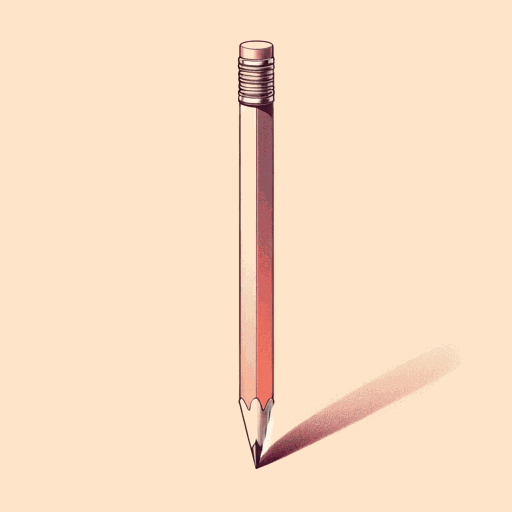
27 pages • 54 minutes read
I, Pencil: My Family Tree as Told to Leonard E. Read
A modern alternative to SparkNotes and CliffsNotes, SuperSummary offers high-quality Study Guides with detailed chapter summaries and analysis of major themes, characters, and more.
Essay Analysis
Key Figures
Index of Terms
Literary Devices
Important Quotes
Essay Topics
Discussion Questions
Why did Read chose to write his essay from the first-person point of view of a pencil, and how does this unusual perspective impact the essay’s thematic effect?
Read’s argument centers on the notion of “the Invisible Hand ,” but he never actually defines the term. What are the origins of this term, and how has its meaning been analyzed and debated by modern economists? Which interpretation does Read employ?
Read repeatedly refers to “freedom” and “free people.” What do these terms mean to him, and why are they so important? Are there other ways of understanding “freedom” that might call into question Read’s absolute faith in the societal benefits of laissez-faire capitalism?

Don't Miss Out!
Access Study Guide Now
Featured Collections
Business & Economics
View Collection
Challenging Authority
Essays & Speeches
Philosophy, Logic, & Ethics
Politics & Government

“I, Pencil: My Family Tree” as told to Leonard E. Read, Dec. 1958
- Leonard E. Read (author)
- Milton Friedman (introduction)
A charming story which explains how something as apparently simple as a pencil is in fact the product of a very complex economic process based upon the division of labor, international trade, and comparative advantage.
- EBook PDF This text-based PDF or EBook was created from the HTML version of this book and is part of the Portable Library of Liberty.
- Kindle This is an E-book formatted for Amazon Kindle devices.
I Pencil: My Family Tree as told to Leonard E. Reed (Irvington-on-Hudson, New York: Foundation for Economic Education, Inc., 1999).
Published online with the kind permission of the copyright holders, the Foundation for Economic Education.
- Economic theory. Demography
Related Collections:
- Popular Political Economy
Related People
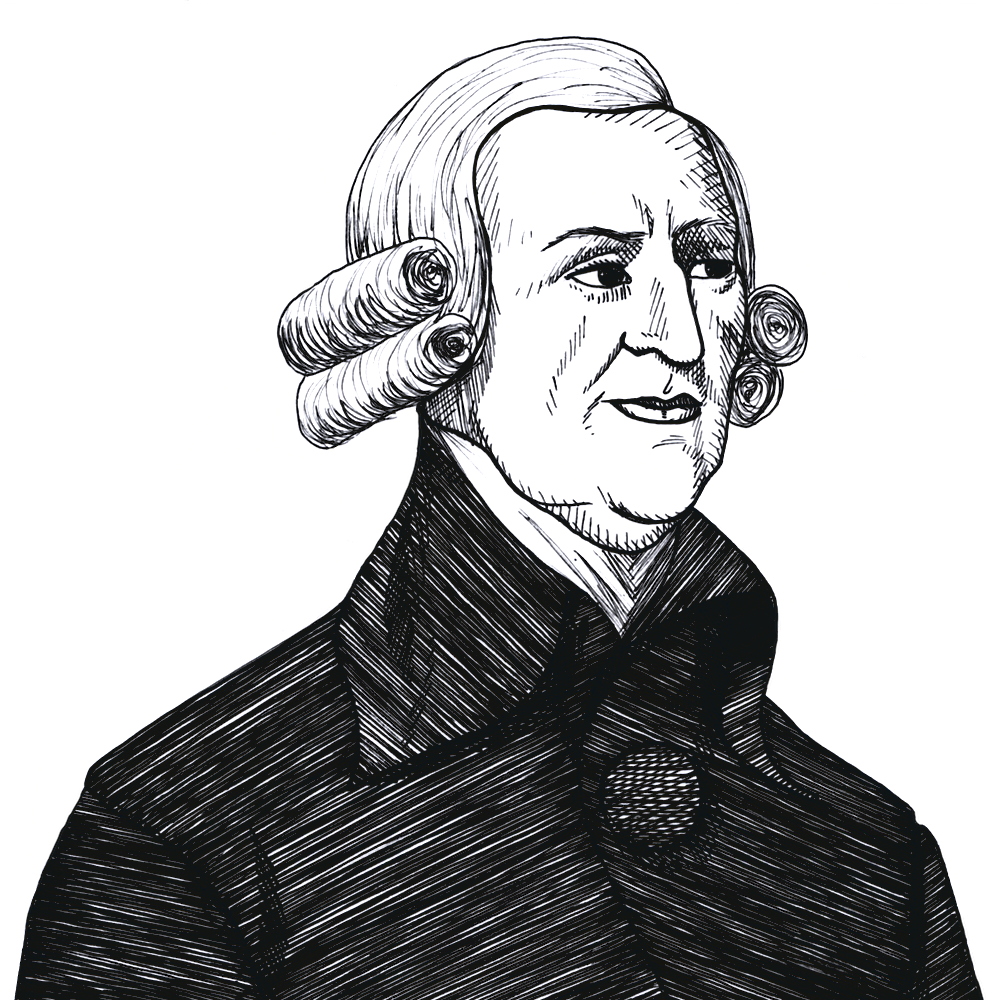
Connected Readings
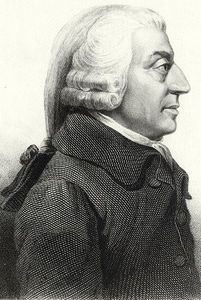
Read’s essay is inspried in part by the pin factory Adam Smith describes in Book I, Chapter 1 of the Wealth of Nations.
AdamSmithWorks
What can we learn about our own world from Smith? Join the workers in an 18th century pin factory to find out more…
Competitive Enterprise Institute
A guided exploration of Smith’s classic text.
The new Apple Pencil Pro is harder to lose and better to draw with
Unlike last year’s usb-c model, the apple pencil pro is the first real ipad stylus update in almost six years..
By Jess Weatherbed , a news writer focused on creative industries, computing, and internet culture. Jess started her career at TechRadar, covering news and hardware reviews.
Share this story
:format(webp)/cdn.vox-cdn.com/uploads/chorus_asset/file/25437118/Screenshot_2024_05_07_at_9.32.21_AM.png)
Apple announced its third-generation Apple Pencil today during its “Let Loose” iPad event, adding Find My support and new capabilities for adapting the stylus to different creative tasks. Available to order today for $129 — the same price as the second-gen Apple Pencil — the new Apple Pencil Pro introduces features closer to what you’d find on pens for dedicated drawing tablets , like a “Barrel Roll” gyroscope feature and a squeeze gesture for switching between software functions.
This is the first real update to the Apple Pencil series since the second-generation model was announced in 2018 . While the more affordable USB-C Apple Pencil that was released last year supported a wider range of iPad models than the Apple Pencil 2, it also ditched advanced second-gen features like pressure sensitivity and double-tap tool switching — making it less useful for tasks like graphic design and 3D sculpting.
:format(webp)/cdn.vox-cdn.com/uploads/chorus_asset/file/25437157/Screenshot_2024_05_07_at_7.35.17_AM.png)
The Apple Pencil Pro carries those advanced features over from its predecessor, alongside new ones like a squeeze gesture similar to the stem on the Apple AirPods Pro 2, which brings up a new palette for quickly switching between different tools, colors, and line weights, and haptic feedback, which pulses when users squeeze or double‑tap the stylus.
Adding support for Apple’s Find My device location system is also a welcome update for scatterbrained users who frequently lose their stylus. It’s easy to misplace a slim, pencil-shaped device, and I know firsthand how frustrating and expensive it is to replace an Apple Pencil that inevitably turns up months later after you’ve already torn your home apart looking for it.
App developers can also create their own custom interactions for the Apple Pencil Pro. Some examples provided by Procreate CEO James Cuda include brushes that “respond in entirely new ways” thanks to the Barrel Roll feature or using the squeeze feature to activate software shortcuts. The Barrel Roll feature also allows animators to move and rotate objects at the same time while recording actions in Procreate Dreams .
A notable drawback here is compatibility — the Apple Pencil Pro is only supported on the newly announced M2 iPad Air and M4 OLED iPad Pro models, so users with older hardware won’t be able to upgrade their stylus. And while the Apple Pencil Pro provides better access to software shortcuts than its predecessors, creative professionals will likely find that the pens on dedicated drawing tablets like Wacom’s new Movink 13 are better for comfort and customization.

Microsoft says it needs games like Hi-Fi Rush the day after killing its studio
Apple apologizes for ipad ‘crush’ ad that ‘missed the mark’, inside microsoft’s xbox turmoil, people sure are pressed about apple’s crushing ipad commercial, apple doesn’t understand why you use technology.
More from this stream Apple iPad event: all the news from Apple’s ‘Let Loose’ reveal
The ipad air is now heavier than the ipad pro, here’s where you can preorder apple’s latest ipad air and ipad pro, apple quietly kills the old-school ipad and its headphone jack, apple launches final cut camera app to support multicam productions.
Apple just announced a new Apple Pencil Pro, and it's so much better than I expected
Do a barrel roll!
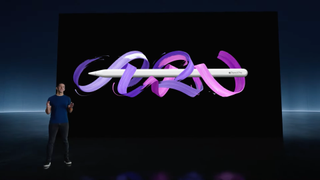
Apple just announced a new iPad Air and iPad Pro , bringing in more powerful tablets and OLED displays for the Pro models. However, I’m more hyped about the accessories; in particular, the new Apple Pencil Pro.
The Apple Pencil Pro offers a whole new range of features and upgrades that have me super excited to get back into digital art. The pencil now offers a new barrel sensor, which means you can squeeze the pen lightly to bring up a new tool panel (similar to how you pinch your AirPods to pause and play music).
No longer will you be holding a static stick of plastic; the Apple Pencil Pro is incredibly responsive thanks to the addition of haptics. Alongside that, you can now roll the new Apple Pencil to control the selected brush or editing tool, opening the doors to more depth to art or 3D models and allowing you to take full control of your work.
@techradar ♬ Rockin - Chris Alan Lee
Pro-creation

The announcement featured James Cuda, the CEO of popular art tool Procreate , to introduce all the cool new things Apple Pencil Pro can facilitate.
My favorite as a novice Procreate user, is the ability to hover and squeeze the pencil to swap between layers, which is an absolute lifesaver when you’re creating art and get lost between the dozens of layers you end up needing. The roll feature also debuts alongside new brushes in Procreate for you to take advantage of.

As for Procreate Dreams animators, don’t worry, you’ve not been left out: you’ll be able to pick up and swipe over elements of your drawing in Procreate and swipe them right over to Dream with the Apple Pencil Pro. Plus, if you wish to animate only a single element in the frame, you can use the pencil to manipulate the object to add a more realistic ‘free-hand’ look.
Perhaps my favorite new feature of the Apple Pencil Pro is the support for Find My tracking system, which could be an absolute lifesaver for users who misplace Apple products. I can’t tell you how many times I’ve lost my Apple Pencil, just to have to tear the whole house apart looking for it because it’s not supported like my Airpods or iPhone.
Get daily insight, inspiration and deals in your inbox
Get the hottest deals available in your inbox plus news, reviews, opinion, analysis and more from the TechRadar team.
A pricey professional Pencil

In terms of pricing, the Apple Pencil Pro retails for $129 / £129 / AU$219 on the Apple Store , which makes it the most expensive Apple Pencil on the site. The price does seem a little steep, especially since the older versions are not nearly as expensive. But it is a ‘Pro’ device (something that has consistently been associated with higher prices in Apple’s product lineup) and has a whole bunch of new features, so I can’t be too mad about it.
Of course, the Apple Pencil Pro will charge and store magnetically to the side of your iPad. However, according to the Apple website the Apple Pencil Pro is only compatible with the new M2 iPad Air and M4 iPad Pro. As someone with a very dusty A14 iPad Air, I am somewhat disappointed, though there is always a chance this could change in the future. And the new iPads are impressive enough that many existing users may be tempted to upgrade.
You might also like...
- Apple event live blog: Get ready for new iPads and more
- The iPad Pro (2024) just landed with a super-powerful M4 chipset and new OLED screen
- Apple M4 chip: everything we know so far about Apple's new chip

Muskaan is TechRadar’s UK-based Computing writer. She has always been a passionate writer and has had her creative work published in several literary journals and magazines. Her debut into the writing world was a poem published in The Times of Zambia, on the subject of sunflowers and the insignificance of human existence in comparison. Growing up in Zambia, Muskaan was fascinated with technology, especially computers, and she's joined TechRadar to write about the latest GPUs, laptops and recently anything AI related. If you've got questions, moral concerns or just an interest in anything ChatGPT or general AI, you're in the right place. Muskaan also somehow managed to install a game on her work MacBook's Touch Bar, without the IT department finding out (yet).
Why didn’t Apple launch an iPad mini 7? The latest rumors suggest it's still en route
10 things Apple forgot to tell us about the new iPad Pro and iPad Air
US realty trust giant Brandywine says data stolen in ransomware attack — some systems shut down while investigation into stolen data continues
Most Popular
- 2 It's officially time to abandon the Oculus Quest 2, as new VR games and apps are dodging the aging headset
- 3 The Arc browser just launched and yes, it really is that good
- 4 I tried Netflix’s Physical: 100 endurance test and it was one of the most difficult workouts I’ve ever done
- 5 NYT Strands today — hints, answers and spangram for Tuesday, May 7 (game #65)
- 2 A dangerous new malware is targeting Macs of all kinds — here's how to stay safe
- 3 Microsoft is tying executive pay to security performance — so if it gets hacked, no bonuses for anyone
- 4 I ran an entire marathon with a Garmin, an Apple Watch and Strava – here are all the differences
- 5 It's officially time to abandon the Oculus Quest 2, as new VR games and apps are dodging the aging headset
- a. Send us an email
- b. Anonymous form
- Buyer's Guide
- Upcoming Products
- Tips / Contact Us
- Podcast Instagram Facebook Twitter Mastodon YouTube Notifications RSS Newsletter
Apple Pencil Pro: All the New Features
Apple this week debuted the Apple Pencil Pro, marking the first major revision to the Apple Pencil lineup since the 2018 launch of the Apple Pencil 2. There are some major changes that were introduced with the new accessory, including new gestures and capabilities.
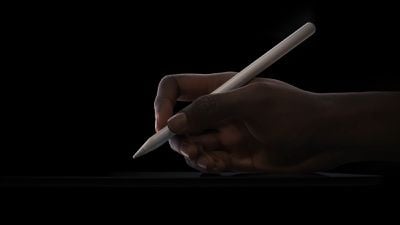
The squeeze gesture allows the Apple Pencil Pro to sense when pressure is applied to the sides of the device. Using squeeze brings up a palette so that you can do things like switch tools, line weights, and colors.
Developers can customize how apps react to the squeeze gesture so it can bring up custom controls in each app.
Barrel Roll
There is a gyroscope in the Apple Pencil Pro that allows the rotation of the barrel to change the orientation of certain tools. It basically offers much more precise control of shaped pen and brush tools, similar to how a real pen or brush would function when you tilt it while drawing or sketching.
Haptic Feedback
A built-in haptic engine offers haptic feedback when using the Apple Pencil Pro's gestures. A light haptic pulse will respond when using a squeeze or double-tap gesture, plus there is feedback when using the snap to a Smart Shape feature.
Find My is available for the Apple Pencil Pro so it can be tracked right alongside the iPad and other devices in the Find My app.
Charging and Pairing
The Apple Pencil Pro attaches to the side of the iPad Pro or the iPad Air , and the magnetic connection enables automatic pairing and charging. There is a new magnetic interface that is available on the 2024 iPad Pro models.
Existing Features
Current Apple Pencil features like Apple Pencil hover and double tap are supported. Hover lets you preview where the Apple Pencil will touch down on the display before a mark is made, while double tap can be used for swapping between tools.
Low latency, tilt sensitivity, and pressure sensitivity are all included features.
Compatibility
The Apple Pencil Pro is compatible with the M2 iPad Air models and the M4 iPad Pro models, so it only works with the May 2024 iPads.
The Apple Pencil Pro is priced at $129, which is also the cost of the Apple Pencil 2.
Get weekly top MacRumors stories in your inbox.
Top Rated Comments
Popular Stories
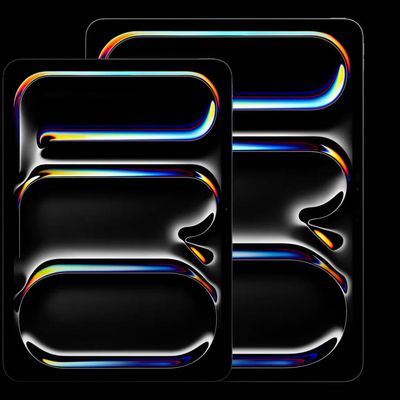
Apple Announces New iPad Pro With M4 Chip, OLED Display, and More
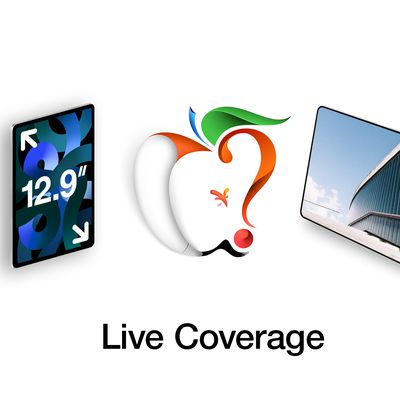
Apple Event Live Blog: New iPad Pro, iPad Air, and More

Everything Announced at Today's Apple Event
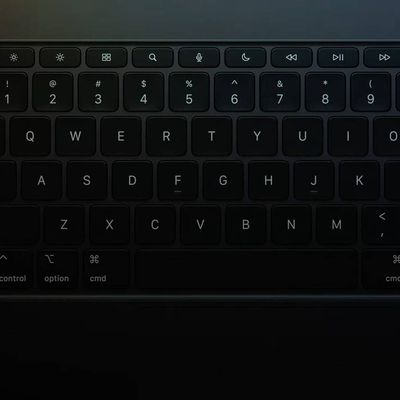
Apple Announces Redesigned Magic Keyboard for New iPad Pro Starting at $299

Apple Says iOS 17.5 Coming 'Soon' With These New Features for iPhones
Next article.

Our comprehensive guide highlighting every major new addition in iOS 17, plus how-tos that walk you through using the new features.

App Store changes for the EU, new emoji, Podcasts transcripts, and more.

Get the most out your iPhone 15 with our complete guide to all the new features.
A deep dive into new features in macOS Sonoma, big and small.

Revamped models with OLED displays, M4 chip, and redesigned Magic Keyboard accessory.

Updated 10.9-inch model and new 12.9-inch model, M2 chip.

Apple's annual Worldwide Developers Conference will kick off with a keynote on June 10.

Expected to see new AI-focused features and more. Preview coming at WWDC in June with public release in September.
Other Stories

1 day ago by Tim Hardwick
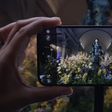
2 days ago by Tim Hardwick
3 days ago by Tim Hardwick

1 week ago by Tim Hardwick
Hands-on: Apple Pencil Pro — so good, it might have even won Steve Jobs over
The most advanced stylus ever we go hands-on with apple pencil pro..
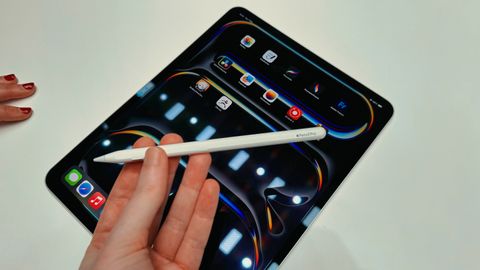
Early Verdict
Apple Pencil Pro may be 'just' an accessory, but it steals the show in the new iPad hardware line-up thanks to a great price and useful new functionality layered on top of an already responsive foundation.
Useful new gestures
Gyroscope opens advanced brush techniques
Find My network support
Not backwards compatible
Further complicates the Pencil range
You can always trust iMore. Our team of Apple experts have years of experience testing all kinds of tech and gadgets, so you can be sure our recommendations and criticisms are accurate and helpful. Find out more about how we test.
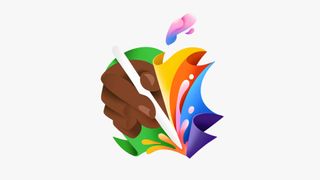
- Let Loose event LIVE — Everything announced at the Let Loose event, as it happens - OLED iPad Pro — M3 and a major display upgrade expected! - iPad Air 6 — Apple's thinnest and lightest tablet gets a new processor! - Apple Pencil Pro — Or should we say Apple Pencil 3?
Considering Steve Jobs’ well-documented hatred of stylus input on touchscreen devices, it's stunning that the Apple Pencil has become the go-to accessory for the best iPads on the market. Letting creatives get arty on canvases and note takers jot down their scribbles, Apple Pencil has become a key factor guiding people to the iPad range, aside from the size of its screen. Why buy an iPad, you may ask? You can do most of the same stuff on your iPhone, with little of the workplace flexibility that a MacBook has. Well neither iPhone nor MacBook support Pencil, do they?
Apple seems increasingly aware of the importance of Pencil to the iPad’s fortunes, spending lots of its May 7 ‘Let Loose’ event showcasing an all new scribbler, the Apple Pencil Pro. You could argue that it even stole the show, acting as the connective tissue between the new iPad Air 6 and OLED-equipped iPad Pros it launches alongside, each benefiting from the new features the Apple Pencil Pro introduces.

Despite feeling identical to the Apple Pencil 2 in the hand, the Apple Pencil Pro has a bunch of new features hidden away in its slim frame, each sure to delight artists and note takers.
The most advanced stylus ever?
The first new feature is a simple one, and was previously rumored. Find My network support is now built into the Apple Pencil Pro, making it easier to track down a misplaced pen via an iPhone, Mac or iPad. No more digging down the sofa for a lost stylus.
More exciting are the introduction of a pressure sensor in the barrel and the new haptic motor. The first adds support for all manner of programmable shortcuts that developers can add to their apps, activated by a squeeze of the Pencil Pro. In Apple’s native apps for instance, this brings up a brush wheel, letting you quickly jump between shortcut input selections. The second, haptic feedback, is handy for helping a user feel a more tactile interaction between the pen and their projects — it can trigger a rumble, for instance, when a highlighted object has snapped into alignment on a layer’s grid, something that might not be easily eyeballed when your hand covers half the screen.

For the true artists out there, a new gyroscope in the Apple Pencil Pro has perhaps the most potential of all. Working in tandem with the ‘Hover’ feature (which lets you preview where a stroke is going to be placed on the tablet before you commit to it), you’re now able to twist and turn digital brush tips as you place them on the iPad’s surface. The best way to picture this is to imagine replicating the motion of pushing a paintbrush vertically down on a page, and then twisting it to splay its fibers out like the petals of a flower. It introduces the sort of strokes and actions that simply haven’t been possible with pen input — digital or traditional — before this point, potentially taking hours of work out of painstaking simulated twist brush strokes.
That's all before considering Apple Pencil's signature low-latency input, traditional pen-like feel and smart magnetic charging features. If it wasn't already an essential part of the iPad experience, the Apple Pencil Pro now feels like THE reason to own an iPad.
There’s still too many Pencils, and too much compatibility confusion
Pencil Pro and its many new features are a much needed high point for the Apple Pencil line up, but they haven’t quite solved a wider issue at the heart of the Pencil range. The Apple Pencil, like the iPad range itself, has been a confusing part of Apple’s product family for years.
Before the Let Loose event, Apple offered three different versions of Apple Pencil: 1st-gen, 2nd-gen, and the half-way-house cheaper USB-C variant. Each had frustratingly overlapping feature sets and drawbacks, plus differing supported tablets per pen. No one, for instance, wants to be left scrabbling for a converter dongle just to charge their Pencils, as was the bizarre case owners of the 10.9-inch 10th-gen iPad suffered from.
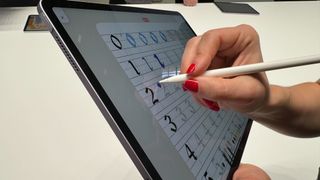
While Pencil Pro is the premium offering most people will clamour for, it introduces its own complexity to the range. Due to a new charging and pairing method (both magnetically triggered on the sides of the new iPads) it is compatible exclusively with the new tablets it launches alongside. Even the last generation M2 iPad Pros , which have the exact same chip under the hood as found in the latest (Pencil-Pro-supported) iPad Air 6, won’t be able to make use of Pencil Pro. It’s a further splintering of the feature set, with the 10th-gen iPad necessitating the continued sale of the first-ever Apple Pencil. That means there are now four Pencils those walking into an Apple Store have to understand and choose between.
Apple Pencil Pro is a thorough and exciting revamp of Apple’s stylus lineup then, even if it will give some poor Apple store staff a headache when it comes to upselling the accessory to its corresponding customer in the coming weeks. Apple Pencil Pro is available to buy now, priced at $129 — the same price as its 2nd-gen Pencil predecessor launched at — and will ship next week. Our full Apple Pencil Pro review will follow this early hands-on look in the coming days, once we’ve had more time to extensively put electronic pen to digital paper.

Gerald Lynch is the Editor-in-Chief of iMore, keeping careful watch over the site's editorial output and commercial campaigns, ensuring iMore delivers the in-depth, accurate and timely Apple content its readership deservedly expects. You'll never see him without his iPad Pro, and he loves gaming sessions with his buddies via Apple Arcade on his iPhone 15 Pro, but don't expect him to play with you at home unless your Apple TV is hooked up to a 4K HDR screen and a 7.1 surround system.
Living in London in the UK, Gerald was previously Editor of Gizmodo UK, and Executive Editor of TechRadar, and has covered international trade shows including Apple's WWDC, MWC, CES and IFA. If it has an acronym and an app, he's probably been there, on the front lines reporting on the latest tech innovations. Gerald is also a contributing tech pundit for BBC Radio and has written for various other publications, including T3 magazine, GamesRadar, Space.com, Real Homes, MacFormat, music bible DIY, Tech Digest, TopTenReviews, Mirror.co.uk, Brandish, Kotaku, Shiny Shiny and Lifehacker. Gerald is also the author of 'Get Technology: Upgrade Your Future', published by Aurum Press, and also holds a Guinness world record on Tetris. For real.
What is a hands on review?
'Hands on reviews' are a journalist's first impressions of a piece of kit based on spending some time with it. It may be just a few moments, or a few hours. The important thing is we have been able to play with it ourselves and can give you some sense of what it's like to use, even if it's only an embryonic view.
Here's how Apple Pencil Pro and M4 iPad Pro will change the way you use Procreate and Procreate Dreams
This Apple Pencil tip makes note-taking a breeze — Jot down thoughts on any app or site in just one quick swipe
OLED iPad Pro M4 vs iPad Pro M2: Does more money mean a better iPad?
Most Popular

IMAGES
VIDEO
COMMENTS
Read was the author of 29 books and hundreds of essays. "I, Pencil," his most famous essay, was first published in 1958. Although a few of the manufacturing details and place names have changed, the principles endure. *** Introduction by Lawrence W. Reed. Eloquent. Extraordinary. Timeless. Paradigm-shifting. Classic.
I, Pencil is available as a free download. Leonard E. Read (1898-1983) was the founder of FEE, and the author of 29 works, including the classic parable "I, Pencil.". Leonard E. Read (1898-1983) founded FEE in 1946 and served as its president until his death. "I, Pencil," his most famous essay, was first published in the.
3 Notes. I am a lead pencil—the ordinary wooden pencil familiar to all boys and girls and adults who can read and write. [1] Writing is both my vocation and my avocation; that's all I do. You may wonder why I should write a genealogy. Well, to begin with, my story is interesting. And, next, I am a mystery—more so than a tree or a sunset or ...
I, Pencil: My Family Tree as Told to Leonard E. Read, commonly known as I, Pencil, is an essay by Leonard Read and it was first published in the December 1958 issue of The Freeman. [1] "I, Pencil" is written in the first person from the point of view of a pencil. The pencil details the complexity of its own creation, listing its components ...
Pencil" to mark the essay's timeless message for a new generation. Someday there will be a centennial edition, maybe even a . millennial one. This essay is truly one for the ages.-Lawrence W. Reed President, FEE. Atlanta, Georgia May 2015. 3. I, Pencil. My Family Tree as told to Leonard E. Read
The essay "I, Pencil," also known as "I, Pencil: My Family Tree as Told to Leonard E. Read," was first published by the American businessman and libertarian advocate Leonard E. Read in 1958. The essay first appeared in The Freeman, a publication of the Foundation for Economic Freedom (FEE), a think-tank he co-founded in 1946. Read was a staunch critic of US President Franklin D ...
About. "I, Pencil" is an essay by Leonard Read. The full title is "I, Pencil: My Family Tree as Told to Leonard E. Read" and it was first published in the December 1958 issue of The ...
The same argument could have been given by writing a different essay, say *"I, Car"* or *"I, Airplane"*. As a good educator Leonard E. Read chooses a more down-to-earth example - a simple pencil - to prove his point and make his argument stick with the reader. > *The lesson I have to teach is this: Leave all creative energies uninhibited.
I, Pencil is an essay written by Leonard E. Read, which tells the story of a simple wooden pencil and explores the complex network of individuals, skills, and resources involved in its creation.The pencil serves as a metaphor for the spontaneous order and creative power of free markets. The essay emphasizes the importance of individual freedom, voluntary cooperation, and the division of labor ...
Rightfully so, for this little essay opens eyes and minds among people of all ages. Many first-time readers never see the world quite the same again." ~ Lawrence W. Reed. ... simple and beautiful explanation of the miracle of the "invisible hand" by following the production of an ordinary pencil. Read shows that none of us knows enough to ...
"I, Pencil" is a persuasive essay composed as a dramatic monologue in the voice of a lead pencil. Read published the essay in a specialized libertarian magazine, indicating that his intended audiences were economists, people educated in economics, and principally, the fellow conservatives who subscribed to The Freeman.In other words, Read is largely "preaching to the choir," and the ...
Leonard Read's 1958 essay "I, Pencil" uses a pencil as a metaphor to illustrate the complexity and interdependence of human society and the free market economy. Read traces the pencil's journey from raw materials to production and argues for the importance of individual freedom and creativity.
I am a lead pencil—the ordinary wooden pencil familiar to all boys and girls and adults who can read and write. (My official name is "Mongol 482.". My many ingredients are assembled, fabricated, and finished by Eberhard Faber Pencil Company, Wilkes-Barre, Pennsylvania.) Writing is both my vocation and my avocation; that's all I do.
Leonard Read's delightful story, "I, Pencil," has become a classic, and deservedly so. I know of no other piece of literature that so succinctly, persuasively, and effectively illustrates the meaning of both Adam Smith's invisible hand—the possibility of cooperation without coercion—and Friedrich Hayek's emphasis on the importance ...
I, Pencil. In November 2012, the Competitive Enterprise Institute (CEI) released I, Pencil: The Movie, an animated short film adapted from the 1958 essay by Leonard E. Read, founder of the Foundation for Economic Education. CEI's I, Pencil film and extended commentary series, featuring Larry Reed, Deirdre McCloskey, Art Carden, and Walter ...
The film is from the Competitive Enterprise Institute and was adapted from the classic 1958 essay by Leonard E. Read "I, Pencil: My Family Tree as told to Leonard E. Read" which concludes with ...
With great pride, FEE publishes this new edition of "I, Pencil" to mark the essay's timeless message for a new generation. Someday there will be a centennial edition, maybe even a millennial one. This essay is truly one for the ages. - Lawrence W. Reed President, FEE May 2015 3
Essay Topics. 1. Why did Read chose to write his essay from the first-person point of view of a pencil, and how does this unusual perspective impact the essay's thematic effect? 2. Read's argument centers on the notion of "the Invisible Hand ," but he never actually defines the term.
I, Pencil - animated version of great essay by Leonard E. Read.Leonard E. Read (1898-1983) was the founder of FEE, and the author of 29 works, including the ...
I am a lead pencil—the ordinary wooden pencil familiar to all boys and girls and adults who can read and write. (My official name is "Mongol 482." My many ingredients are assembled, fabricated, and finished by Eberhard Faber Pencil Company, Wilkes-Barre, Pennsylvania.) Writing is both my vocation and my avocation; that's all I do.
A charming story which explains how something as apparently simple as a pencil is in fact the product of a very complex economic process based upon the division of labor, international trade, and comparative advantage. ... Read's essay is inspried in part by the pin factory Adam Smith describes in Book I, Chapter 1 of the Wealth of Nations. ...
The Apple Pencil Pro carries those advanced features over from its predecessor, alongside new ones like a squeeze gesture similar to the stem on the Apple AirPods Pro 2, which brings up a new ...
I, Pencil My Family Tree as told to Leonard Read . I am a lead pencil — the ordinary wooden pencil familiar to all boys and girls and adults who can read and write. Writing is both my vocation and my avocation; that's all I do. You may wonder why I should write a genealogy. Well, to begin with, my story is interesting.
In terms of pricing, the Apple Pencil Pro retails for $129 / £129 / AU$219 on the Apple Store, which makes it the most expensive Apple Pencil on the site. The price does seem a little steep ...
The Apple Pencil Pro attaches to the side of the iPad Pro or the iPad Air, and the magnetic connection enables automatic pairing and charging. There is a new magnetic interface that is ...
Apple Pencil Pro is a thorough and exciting revamp of Apple's stylus lineup then, even if it will give some poor Apple store staff a headache when it comes to upselling the accessory to its corresponding customer in the coming weeks. Apple Pencil Pro is available to buy now, priced at $129 — the same price as its 2nd-gen Pencil predecessor ...
"I, PENCIL" by Leonard E. Read, Founder, Foundation for Economic Education Nearly 10 years ago Imprimis featured a reprint of a 1958 essay called simply: "I, Pencil." We continue to believe that it is one of the finest defenses of the free market ever written and have reprinted it again here. It is an essay that invites wonder.